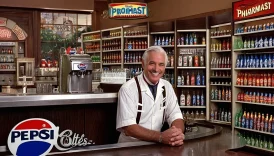Who Inspired the Story of Costco?

- Who Inspired the Story of Costco?
- The Founders of Costco
- The Role of Membership Models
- Influences from Other Retailers
- Warehouse Club Concept
- Impact of Discount Retailing
- Customer-Centric Philosophy
- Community and Employee Engagement
- Corporate Social Responsibility
- Employee Treatment and Benefits
- Frequently Asked Questions
Costco has become a household name, renowned for its unique business model and customer-centric philosophy. But have you ever wondered who inspired this retail giant? The story of Costco is not just about a store; it’s about visionaries who dared to think differently and create a shopping experience that resonates with millions. In this article, we will dive into the key figures and influences that shaped Costco’s journey, highlighting the values that drive its operations and the innovative ideas that sparked its growth.
At the heart of Costco’s success are its founders, Jim Sinegal and Jeffrey Brotman. Both men brought their own experiences and insights to the table, which laid the groundwork for what would become a revolutionary retail model. Sinegal, with his background in wholesale and retail, understood the importance of offering quality products at unbeatable prices. On the other hand, Brotman, with his legal expertise and business acumen, provided the strategic vision necessary for expansion. Together, they crafted a company that prioritizes customer satisfaction and employee welfare, setting a standard that many aspire to emulate.
One of the most significant inspirations for Costco’s success is its membership-based retail model. This concept wasn’t entirely new; it drew from earlier businesses like Price Club, which pioneered the warehouse club approach. However, Costco took this idea and perfected it, creating a loyal customer base that values the savings and quality offered. The model encourages customers to feel part of an exclusive club, fostering a sense of belonging and loyalty that is hard to replicate.
Moreover, the warehouse club concept itself has a fascinating history. Originating from the need for bulk purchasing, it has evolved into a shopping experience that prioritizes value and savings. Costco revolutionized this model by offering high-quality products at discounted prices, ensuring that members not only save money but also receive premium goods. This approach has set the company apart in a competitive retail landscape.
| Key Influences on Costco | Impact |
|---|---|
| Jim Sinegal | Focus on quality and customer service |
| Jeffrey Brotman | Strategic vision for growth |
| Price Club | Foundation of the membership model |
| Warehouse Concept | Bulk purchasing and value |
In conclusion, the story of Costco is a compelling narrative of innovation, customer dedication, and community values. The founders, along with their inspirations, have crafted a retail experience that not only meets the needs of consumers but also fosters a positive workplace culture. As we explore the deeper influences behind Costco, it becomes clear that the company stands as a testament to the power of visionary leadership and a commitment to excellence.
The Founders of Costco
The story of Costco is not just about a warehouse filled with discounted goods; it’s a tale woven from the dreams and aspirations of its founders, Jim Sinegal and Jeffrey Brotman. These two visionaries didn’t just stumble upon success—they crafted it with their unique blend of entrepreneurial spirit and innovative thinking. Their journey began in the early 1980s, a time when the retail landscape was ripe for disruption. But who were these men, and what inspired their groundbreaking ideas?
Jim Sinegal grew up in a working-class family, where he learned the value of hard work and customer service early on. After graduating from college, he entered the retail business, working at a variety of companies. His experiences shaped his belief that treating employees well leads to better customer service. On the other hand, Jeffrey Brotman came from a family of retail entrepreneurs. His background in law and business helped him understand the intricacies of corporate operations, making him the perfect partner for Sinegal.
Together, they launched the first Costco in 1983 in Seattle. Their vision was simple yet revolutionary: create a membership-based warehouse that offered high-quality goods at unbeatable prices. This model was inspired by earlier ventures like Price Club, but Sinegal and Brotman took it a step further by focusing on a customer-centric approach. They believed that if members felt valued, they would not only return but also spread the word.
| Founders | Background | Key Influence |
|---|---|---|
| Jim Sinegal | Working-class roots, retail experience | Customer service and employee welfare |
| Jeffrey Brotman | Family of retailers, legal expertise | Corporate operations and strategy |
In the words of Sinegal, “The secret to our success is simple: treat your employees like they make a difference, and they will.” This philosophy not only attracted customers but also fostered a loyal workforce. The synergy between Sinegal’s hands-on leadership and Brotman’s strategic insight created a company culture that prioritized both customer satisfaction and employee engagement.
As Costco grew, it became clear that the founders’ commitment to their core values—quality, value, and community—was the backbone of their success. Their story serves as a powerful reminder that behind every successful brand are individuals whose vision and values inspire an entire organization.
The Role of Membership Models
The membership model is a cornerstone of Costco’s success, transforming the way consumers approach shopping. By requiring a membership fee, Costco not only creates a sense of exclusivity but also fosters a loyal customer base. This model was not invented by Costco; rather, it was inspired by earlier retail concepts, such as warehouse clubs and wholesale distributors. However, Costco has perfected this model, making it a vital part of their business strategy.
Costco’s membership structure offers a unique blend of value and savings, which is appealing to a broad audience. With two primary membership tiers—Gold Star and Executive—customers can choose a plan that best fits their shopping habits. The Executive membership, for instance, provides additional benefits, including an annual 2% reward on eligible purchases. This tiered approach not only encourages customers to spend more but also enhances their overall shopping experience.
| Membership Type | Annual Fee | Benefits |
|---|---|---|
| Gold Star | $60 | Basic access to warehouse, savings on products |
| Executive | $120 | 2% reward on purchases, additional discounts |
One of the most fascinating aspects of Costco’s membership model is how it encourages customers to perceive their shopping experience differently. Instead of viewing it as a simple transaction, members see it as an investment in their lifestyle. This is akin to a gym membership—you’re not just paying for access; you’re paying for the promise of better health and well-being. Similarly, Costco members are investing in quality products at unbeatable prices.
Moreover, the membership model has allowed Costco to maintain lower prices compared to traditional retailers. By securing a steady revenue stream from membership fees, Costco can afford to operate on thinner margins. This strategy not only benefits the company but also translates into significant savings for its members. As a result, shoppers are more likely to return, creating a cycle of loyalty that is hard to break.
In conclusion, the role of membership models in Costco’s business strategy cannot be overstated. By drawing inspiration from earlier retail concepts and adapting them to fit their unique vision, Costco has created a shopping experience that prioritizes value, exclusivity, and customer satisfaction. The company’s success is a testament to the power of a well-executed membership model in fostering loyalty and driving growth.
Influences from Other Retailers
Costco’s journey to becoming a retail giant wasn’t just a solo endeavor; it was a fascinating interplay of ideas borrowed from other successful retailers. The played a pivotal role in shaping Costco’s unique business model. For instance, the concept of bulk purchasing was inspired by warehouse-style retailers like Price Club, which focused on offering products in larger quantities at lower prices. This model not only appealed to budget-conscious consumers but also laid the groundwork for Costco’s own operations.
Another significant influence came from the discount retailing sector. Stores such as Walmart demonstrated the power of low prices and high-volume sales, which Costco cleverly adapted. By incorporating these strategies, Costco managed to create an environment where members could enjoy significant savings without sacrificing quality. This balancing act is a hallmark of Costco’s approach, allowing them to stand out in a crowded market.
| Retailer | Influence on Costco |
|---|---|
| Price Club | Introduced the warehouse membership model. |
| Walmart | Showed the effectiveness of low pricing and high volume. |
| Sam’s Club | Competed directly, pushing Costco to innovate and improve. |
Moreover, Costco didn’t just stop at imitation; they took inspiration and transformed it into something uniquely their own. For example, while many retailers were focused on the front-end shopping experience, Costco prioritized the warehouse club concept where the shopping environment itself became a part of the savings experience. This meant less emphasis on flashy displays and more on the products at hand, which appealed to their target demographic.
In conclusion, the have been crucial in shaping Costco’s identity. By learning from the successes and failures of others, Costco has crafted a retail experience that resonates with customers, ensuring their loyalty and satisfaction. It’s a classic case of taking the best ideas, mixing them with a unique vision, and creating something that stands the test of time.
Warehouse Club Concept
The is a revolutionary retail model that has changed the way consumers shop. Originating in the 1970s, this approach combines the bulk-buying power of wholesalers with the accessibility of retail stores. At the heart of this concept lies a simple yet powerful idea: provide consumers with high-quality products at remarkably low prices by operating on a membership basis. This model not only fosters a sense of exclusivity but also encourages customer loyalty, as members feel they are part of an elite group that enjoys significant savings.
Costco, with its unique spin on the warehouse club concept, has become a beacon of success in this arena. The founders, Jim Sinegal and Jeffrey Brotman, recognized early on that by offering a limited selection of items in bulk, they could reduce overhead costs, pass savings on to customers, and create an efficient shopping experience. This strategy has drawn inspiration from earlier models, such as Price Club, which paved the way for Costco’s innovative approach.
To illustrate the impact of the warehouse club concept, consider the following key features:
- Low Operating Costs: By maintaining a no-frills environment and minimal staff, Costco keeps its expenses low.
- Bulk Purchasing: Members buy in bulk, which not only saves them money but also reduces packaging waste.
- Limited Selection: Focusing on a smaller range of high-quality products allows for better inventory turnover and lower prices.
In fact, Costco’s adaptation of the warehouse club model has led to impressive financial results, as highlighted in the table below:
| Year | Revenue (in billions) | Number of Members (millions) |
|---|---|---|
| 2018 | $141.57 | 94.3 |
| 2019 | $152.70 | 98.5 |
| 2020 | $166.76 | 105.5 |
As you can see, the warehouse club concept not only benefits consumers but also creates a sustainable business model for retailers like Costco. This innovative approach has made shopping a more engaging and rewarding experience, proving that when customers feel valued, they are likely to return.
Impact of Discount Retailing
When we think about discount retailing, Costco immediately comes to mind as a shining example of how to make it work. The company’s success is not just a stroke of luck; it’s a masterclass in understanding consumer behavior and market dynamics. By offering quality products at lower prices, Costco has managed to create a loyal customer base that keeps coming back for more. But what exactly is the impact of discount retailing on Costco’s business strategy? Let’s dive in!
Discount retailing has fundamentally changed the way consumers shop. It has shifted the focus from brand loyalty to value for money. Costco capitalized on this trend by implementing a pricing strategy that emphasizes affordability without compromising on quality. This approach has allowed Costco to attract a wide range of customers, from budget-conscious families to affluent shoppers looking for premium products at lower prices.
Here are some key impacts of discount retailing on Costco:
- Increased Customer Volume: By offering lower prices, Costco has seen a surge in membership sign-ups and foot traffic.
- Brand Perception: Discount retailing has helped Costco build a reputation as a retailer that prioritizes customer savings.
- Operational Efficiency: The need to maintain low prices has pushed Costco to streamline its operations, focusing on bulk purchasing and minimal marketing costs.
To illustrate the impact of discount retailing, consider the following table which compares Costco’s pricing strategy with traditional retailers:
| Aspect | Costco | Traditional Retailers |
|---|---|---|
| Pricing Strategy | Low prices on bulk items | Higher prices with frequent sales |
| Customer Base | Membership-driven | General public |
| Product Range | Limited selection, high volume | Wide selection, lower volume |
In conclusion, the impact of discount retailing on Costco’s business strategy has been profound. By embracing a model that prioritizes value, Costco has not only attracted a diverse customer base but has also set a standard for operational excellence. As Jim Sinegal once said, “We’re not in the business of making money; we’re in the business of making friends.” This philosophy has allowed Costco to thrive in a competitive retail landscape, proving that discount retailing can indeed lead to lasting success.
Customer-Centric Philosophy
Costco’s is not just a business strategy; it’s a way of life that permeates every aspect of its operations. At the heart of this philosophy is the belief that happy customers lead to a thriving business. Imagine walking into a store where you feel valued and appreciated—this is the experience Costco aims to create. The founders, Jim Sinegal and Jeffrey Brotman, understood that putting customers first was crucial for long-term success. They believed that treating customers well would foster loyalty and drive sales, and boy, were they right!
One of the key elements of Costco’s approach is its commitment to offering high-quality products at low prices. This commitment is reflected in their rigorous selection process for products and suppliers. Costco doesn’t just want to sell; they want to ensure that every item on their shelves meets a certain standard. This is why many customers trust Costco for their shopping needs. To illustrate this, let’s take a look at some of the core principles that guide their customer-centric philosophy:
| Principle | Description |
|---|---|
| Quality Assurance | Costco conducts strict quality checks on all products to ensure they meet customer expectations. |
| Value for Money | By keeping prices low, Costco ensures that customers feel they are getting the best deals. |
| Customer Feedback | Costco actively seeks customer feedback to improve their services and offerings. |
Moreover, Costco’s approach to customer service is heavily influenced by the idea that every customer interaction matters. Employees are trained to prioritize customer needs, ensuring that shoppers feel heard and valued. This is not just about selling products; it’s about building relationships. In fact, many Costco employees have been with the company for years, which contributes to a familiar and friendly atmosphere.
As Jim Sinegal famously said, “We’re not in the business of selling products; we’re in the business of selling trust.” This quote encapsulates the essence of Costco’s customer-centric philosophy. By focusing on trust, quality, and value, Costco has cultivated a loyal customer base that keeps coming back. In a world where many retailers prioritize profits over people, Costco stands out as a beacon of what it means to truly care about customers.
Community and Employee Engagement
When we think about Costco, it’s easy to get lost in the aisles of bulk items and unbeatable prices. However, what truly sets this retail giant apart is its unwavering commitment to community and employee engagement. The founders, Jim Sinegal and Jeffrey Brotman, believed that a thriving business should also nurture the environment it operates in. This philosophy is not just a corporate slogan; it’s deeply embedded in Costco’s DNA.
Costco’s approach to community engagement goes beyond just selling products. The company actively participates in various community initiatives, supporting local charities and organizations. For instance, Costco has been known to donate millions of dollars to food banks, educational programs, and disaster relief efforts. This commitment to giving back not only helps those in need but also fosters a strong sense of loyalty among customers. After all, who wouldn’t want to shop at a place that cares?
Moreover, employee engagement at Costco is a cornerstone of its success. The company understands that happy employees lead to happy customers. Costco is renowned for its competitive wages and comprehensive benefits, which include health insurance, retirement plans, and paid time off. According to a recent survey, Costco employees report a higher job satisfaction rate compared to those in similar retail positions. This satisfaction translates into exceptional customer service, creating a positive shopping experience for everyone.
| Employee Benefits | Details |
|---|---|
| Health Insurance | Comprehensive plans available for full-time employees. |
| Retirement Plans | 401(k) plans with company matching contributions. |
| Paid Time Off | Generous vacation and sick leave policies. |
In addition to these benefits, Costco’s leadership fosters a culture of respect and recognition. Employees are often encouraged to share their ideas and feedback, which are taken seriously by management. This open-door policy not only boosts morale but also drives innovation within the company. It’s a win-win situation: employees feel valued, and Costco benefits from fresh ideas that can enhance operations.
In conclusion, Costco’s dual focus on community and employee engagement not only enriches the lives of its workers and customers but also contributes significantly to its overall success. By prioritizing these values, Costco has created a model that many other businesses aspire to emulate. So next time you shop at Costco, remember that you’re not just buying in bulk; you’re supporting a company that genuinely cares.
Corporate Social Responsibility
When we think about successful companies, we often focus on their profits and market strategies. However, Costco stands out not just for its business acumen but also for its commitment to corporate social responsibility (CSR). This ethos is deeply embedded in the company’s culture and operations, reflecting a profound understanding that businesses must give back to the community that supports them.
Costco’s approach to CSR can be summed up in three key areas:
- Environmental Stewardship: Costco actively works to minimize its environmental footprint. From energy-efficient warehouses to sustainable sourcing of products, the company strives to be a responsible steward of the planet.
- Community Engagement: The company believes in fostering strong relationships with local communities. Costco regularly participates in charitable initiatives, donating millions to food banks, education programs, and disaster relief efforts.
- Ethical Sourcing: Ensuring that products are sourced ethically is crucial for Costco. The company collaborates with suppliers to maintain high standards of labor practices and environmental sustainability.
One compelling example of Costco’s dedication to CSR is its commitment to fair labor practices. The company pays its employees competitive wages, which not only boosts morale but also enhances productivity. A recent study revealed that companies with strong CSR commitments often see a significant increase in employee satisfaction and retention rates. As Costco’s co-founder, Jim Sinegal, famously stated, “Treat your employees like they make a difference, and they will.”
| CSR Initiative | Description | Impact |
|---|---|---|
| Food Bank Donations | Regular contributions to local food banks. | Millions of meals provided to those in need. |
| Sustainable Practices | Implementation of eco-friendly policies. | Reduction in carbon footprint and waste. |
| Employee Benefits | Comprehensive healthcare and retirement plans. | High employee retention and satisfaction. |
In conclusion, Costco’s initiatives not only enhance its brand image but also create a ripple effect of positive change within communities. As consumers become more conscious of the ethical practices of the brands they support, Costco’s commitment to CSR positions it as a leader in the retail industry, proving that doing good is not just good for the world, but also good for business.
Employee Treatment and Benefits
When you think of Costco, what comes to mind? Big warehouses, low prices, and a huge selection of products, right? But behind the scenes, there’s a remarkable story about how employee treatment and benefits play a crucial role in the company’s success. Costco has long been celebrated for its commitment to treating its employees well, and this philosophy is not just a corporate gimmick; it’s a fundamental part of its culture. The founders, Jim Sinegal and Jeffrey Brotman, believed that happy employees lead to happy customers, and this belief has been the backbone of Costco’s operational strategy.
One of the standout features of Costco’s approach is their comprehensive benefits package. This includes health insurance, retirement plans, and even paid time off, which are typically reserved for higher-paying jobs. In fact, Costco’s health benefits are often considered industry-leading, and they have a reputation for paying their employees significantly above the minimum wage. This commitment to fair wages and benefits is not just altruism; it’s a smart business strategy. By investing in their workforce, Costco fosters loyalty and reduces turnover, which ultimately saves money in training and recruitment.
To illustrate this point, let’s take a look at a comparison of Costco’s employee benefits against industry standards:
| Benefit | Costco | Industry Average |
|---|---|---|
| Health Insurance Coverage | Yes | Varies |
| 401(k) Retirement Plan | Yes, with matching | Yes, but often with lower matching |
| Paid Time Off | Yes, generous | Often limited |
| Employee Discounts | Yes | Varies |
Additionally, Costco’s approach to employee treatment is not just about monetary benefits. The company fosters a culture of respect and recognition. Employees are encouraged to voice their opinions, and management often seeks feedback to improve workplace conditions. This open-door policy creates a sense of belonging and encourages teamwork, which is vital in a fast-paced retail environment.
In conclusion, Costco’s commitment to isn’t just a box to check; it’s a core value that drives the company’s success. By prioritizing their workforce, Costco ensures a loyal, motivated team that directly contributes to the satisfaction of its customers. After all, when employees feel valued, it shows in their work, and that’s a win-win for everyone involved!
Frequently Asked Questions
- Who founded Costco?
Costco was founded by Jim Sinegal and Jeffrey Brotman in 1983. Their entrepreneurial vision and commitment to providing value to customers laid the foundation for what Costco is today.
- What is the membership model at Costco?
Costco operates on a membership-based retail model, which means customers pay an annual fee to access the store. This model fosters a loyal customer base, as members often feel part of an exclusive community.
- How did Costco revolutionize the warehouse club concept?
Costco transformed the warehouse club concept by offering a wide selection of high-quality products at low prices, all within a no-frills shopping environment. This unique approach has set Costco apart from traditional retailers.
- What role does customer satisfaction play at Costco?
Customer satisfaction is at the heart of Costco’s business philosophy. The company continually seeks feedback and strives to enhance the shopping experience, ensuring that customers feel valued and appreciated.
- How does Costco engage with the community?
Costco emphasizes community involvement through various initiatives, such as charitable donations and volunteering. This commitment not only strengthens community ties but also builds trust among consumers.
- What benefits do Costco employees receive?
Costco is known for its exceptional employee treatment, offering competitive wages, benefits, and opportunities for advancement. This focus on employee welfare contributes to a motivated workforce and overall company success.
- How does Costco approach corporate social responsibility?
Costco’s approach to corporate social responsibility includes ethical sourcing, sustainability initiatives, and community support. These practices reflect the company’s foundational values and foster consumer trust.





